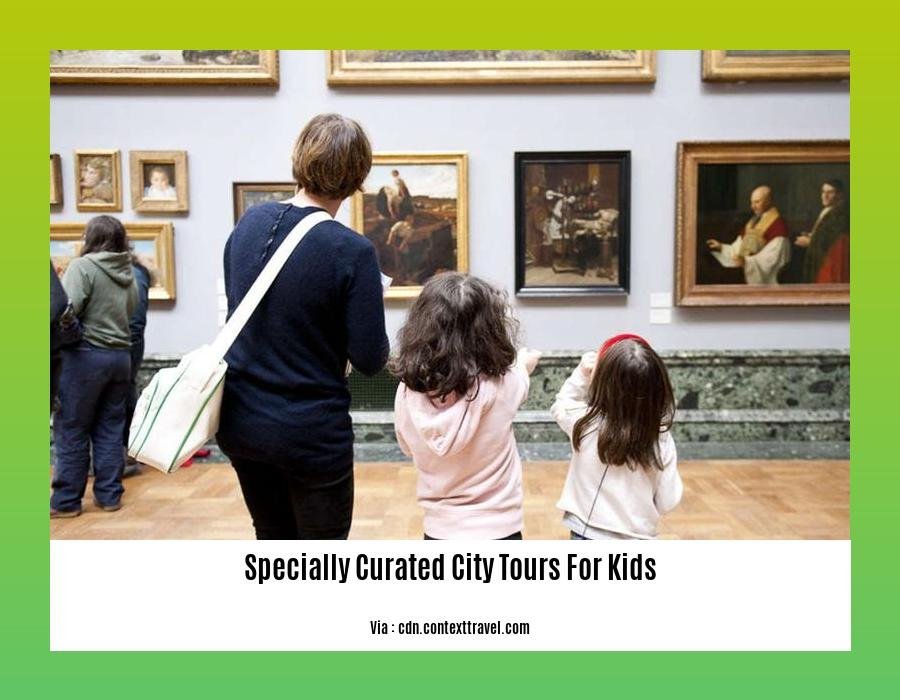Embark on an extraordinary adventure with your little explorers! Uncover the hidden gems of captivating cities through meticulously curated tours designed exclusively for kids. Let their imaginations soar as they marvel at historical landmarks, engage in interactive exhibits, and embark on exciting scavenger hunts. Our tours are meticulously planned to ignite their curiosity, expand their knowledge, and create lasting memories that will inspire a lifelong love for travel and discovery.
Key Takeaways:

- Florence, Italy offers a fantastic family-friendly destination with its historical and artistic treasures.
- Private tours tailored for children at the Uffizi Gallery engage kids with art in interactive and enjoyable ways.
- City tours designed for families offer engaging experiences specifically catering to children and families.
- Plan family tours with consideration for children’s unique learning styles and好奇心.
Specially-Curated City Tours for Kids
As parents, we want our kids to have unforgettable travel experiences that ignite their curiosity and spark a love for learning. Specially-curated city tours for kids are an incredible way to achieve this, transforming cities into captivating playgrounds for young minds.
Plan with Purpose
Tailor your tours to your little explorers’ interests, choosing destinations that align with their passions. Interactive activities, games, and puzzles keep them engaged, allowing them to learn through play.
Keep it Age-Appropriate
Consider the age range of your group and adjust the content accordingly. Age-specific language, activities, and destinations ensure that every child has an enjoyable and educational time.
Break it Down
Avoid overwhelming kids with too much information at once. Break down the tour into smaller segments, incorporating interactive games or discussions to retain attention and make complex concepts easier to grasp.
Provide Context
Explain the historical or cultural significance of each destination, connecting it to the kids’ everyday lives. By providing context, you help them make meaningful connections and deepen their understanding.
Choose the Right Guide
A knowledgeable guide can make all the difference. Look for tours led by passionate and experienced guides who are skilled at engaging young audiences. They can bring the city to life, making history and culture come alive for kids.
By following these tips, you can design specially-curated city tours for kids that create lasting memories, foster their curiosity, and inspire a lifelong love of learning.
- Delve into themed city tours for kids’ interests that cater to your child’s passions, making learning an adventure.
- Discover subject-specific city tours for children that bring history, science, and art to life, igniting their curiosity and expanding their knowledge.
- Embark on city tours centered on kids’ hobbies, transforming their passions into educational experiences that nurture their creativity and imagination.
Keep it Age-Appropriate
When planning a city tour for kids, it’s crucial to tailor it to their age range. Here are some tips to keep it age-appropriate:
Cater to their interests: Choose destinations and activities that align with your kids’ hobbies, whether it’s history, art, or nature. This will make the tour more engaging and memorable.
Engage with interactive activities: Incorporate games, puzzles, or hands-on activities to keep kids engaged and enhance their understanding of the subject matter.
Break it down into smaller chunks: Avoid overwhelming kids with too much information. Break the tour into manageable segments and take frequent breaks.
Provide context and relevance: Explain the historical or cultural significance of each destination and connect it to their everyday lives. This will help them make connections and deepen their understanding.
Key Takeaways:
- Align destinations and activities with your kids’ interests.
- Incorporate interactive elements to engage young minds.
- Break down the tour into smaller segments to avoid overwhelming kids.
- Provide context and relevance to make the tour more meaningful.
Most Relevant URL Source:
- Kids Tours of Rome
Break it Down into Smaller Chunks
Key Takeaways:
- Break down tasks or information into smaller, more manageable “chunks.” This helps your kids comprehend and remember better. Our brains can only handle a limited amount of information at once.
- Chunking helps reduce cognitive overload and improve focus. It’s like giving your kids a smaller bite to chew on, making it easier for them to digest.
- Use the Chunking Method for various tasks: Studying, memorizing, problem-solving, and goal-setting.
Most Relevant URL Source:
Provide Context and Relevance
Customizing city tours to captivate young minds requires a blend of engaging activities and meaningful connections to their lives. By implementing these tips, you’ll enhance their learning experience and create lasting memories:
1. Establish Relevance Through Storytelling
Weave historical anecdotes or cultural insights into your tour, relating them to children’s daily experiences. This approach makes the subject matter relatable and fosters a deeper understanding.
2. Engage with Interactive Exhibits
Incorporate interactive exhibits like touchscreens, puzzles, or role-playing scenarios. Hands-on activities transform learning into a fun and memorable adventure.
3. Break Down Historical Concepts
Avoid overwhelming kids with complex historical details. Instead, break down concepts into smaller, easily digestible segments. Use analogies and visual aids to illustrate abstract ideas.
4. Encourage Questions and Curiosity
Foster a culture of questioning and exploration throughout the tour. Encourage kids to ask questions, share their thoughts, and make connections between the present and the past.
5. Connect History to Current Events
Show children how historical events and figures shaped the world we live in today. Discuss how lessons learned from the past can help us navigate present and future challenges.
Key Takeaways:
- Provide historical or cultural context to Provide Context and Relevance.
- Engage young learners through interactive exhibits.
- Break down complex concepts for better comprehension.
- Encourage questions and foster curiosity.
- Connect history to current events for a deeper understanding.
Citation:











